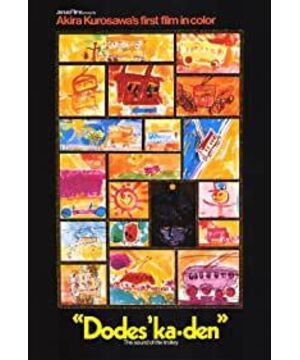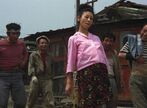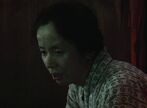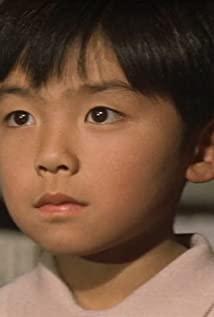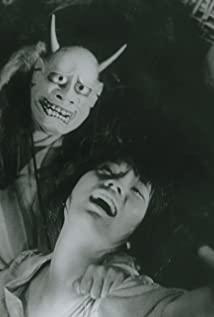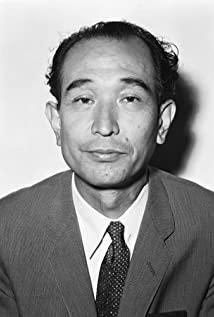"Trolley Mania" should be the most unique of Kurosawa's films, and it has a link between the previous and the next. It is Akira Kurosawa's first color film, and the composition is still so classical, but those gorgeous and flamboyant pictures are like Dali's paintings, which of course cannot be presented in his early black-and-white images. The film not only inherits Kurosawa's strong tendency to criticize reality and the humanitarianism shared with the masters of 19th century literature, but also opens up a colorful and splendid surreal image - this is particularly clear in his "Dream" in his later years. It is said that after the release of this advanced work, the box office was bleak, and there were so many criticisms that Kurosawa made more than 20 wounds on his body and tried to commit suicide. Fortunately, he was rescued in time, otherwise masterpieces such as "Dream", "Ran" and "Shadow Warrior" in his later years would never have been created by a second director.
Whether it's the Jacques Tati-style backboard of the cast and Toru Takemitsu's Japanese folk-style soundtrack, all the elements give us a small and fresh intuitive feeling. Such a relaxed opening seems to be the element that should be in Hirokazu Kore-eda's film-invisible cruelty in blandness and ease. In fact, if you keep watching, many plots and characters in this movie can be seen as the shadow of Hirokazu Koreeda in the future, for example, non-native families represented by weaving workers. The wife had a relationship with others, so that all five children had no blood relationship with the worker's father, but the father still regarded himself as himself. Does this unrelated family combination have the taste of "The Thief Family"? The homeless father and son sleep on the street. The homeless father conceives a big villa for his son step by step. The son keeps nodding and agreeing, but he relies on his young body to carry the reality. He begged thousands of families to eat three meals a day for the two of them, and eventually died in an abandoned shack by eating raw fish. Does this image of a child who has to be indifferent due to precocious puberty has a bit of "no one knows" meaning? Of course, it is the style of Hirokazu Koreeda, which continues the forbearance and restraint of Ozu and Hou Hsiao-hsien. He puts the camera in front of the living reality, with a large number of fixed camera positions, as if watching from the sidelines, allowing the audience to watch the joys and sorrows of the characters under the camera. However, even behind the happy scene is full of grief.
Kurosawa is very different. In the first scene, through the dialogue of the tram boy (forgive me, I never remember the name of the movie), we seem to think that the mother who prayed loudly in front of the shrine is crazy, until the boy walks out of the house, imitating the actions of the tram driver and driving the imagination It dawned on us when we got into the tram. At the end, the teenager drove the tram, stopped the tram as it happened, and returned home. Through the perspective of his mother, we saw that under the strong light, the room was covered with slightly immature paintings of the teenager, one wall after another. All are various types of trams. It starts with the tram and ends with the tram. The key plot points in the middle are run through by the tram. It can be seen that this is an important image of the whole film. Akira Kurosawa also started from the "idiot's perspective" (I will use such a seemingly insulting critical term for the time being, but in my heart, this young man is the only pure and sincere heart in the whole filthy society, even if he is an idiot, He must also be an "idiot" like Duke Myshkin) and set off, let us get on the tram of Japan's bottom society, we followed him and started the tram journey.
Akira Kurosawa has always been a fighter, not to mention such clear-cut films as "Heaven and Hell" and "Sweet Dreams of the Evil Man", even in costume films such as "Seven Samurai", "Rashomon" and "Redbeard", we It can also be seen that he borrows the ancients to describe the present and the sharpness of the times. "Trolley Maniac" exposes the various social problems behind Japan's economic boom through the images of all living beings in a slum. At this time, morality and ethics became increasingly corrupt, and money fetishism prevailed. Men are alcoholics, bully the weak and arrogant; women are humble and submissive, swallowing up; or ignore ethics and indulge their lust. The men were full of ugliness: the two workers and brothers blatantly played the game of wife-swapping and drank heavily all day; the man in the grocery store was drunk and held a samurai sword in the rain, showing his teeth and claws; Aling's uncle seduced Aling while she was sleeping, and afterwards Shameless and remorseful, he fled when the police came to the door. Women are always unable to get rid of the oppression of patriarchy. With her uncle's child, all she can do is to "wield a knife at the weaker", trying to kill the person she loves first, and then try to commit suicide; a worker's wife tells her husband Not only did they not express disgust for their absurd behavior, but instead plunged into their desires, and they were indulging in lust and drinking every day. Once they entered the sea of desire, they fell into an endless abyss. Akira Kurosawa attaches great importance to drama when dealing with different narrative points, but he does not use too much force. He does not do the knife-like direct exposure of Imamura Shohei. It is slightly loose but very catchy. He presented this chaotic scene, witnessing these moral issues to us, and the meaning of criticism is self-evident.
Some of his more direct attitudes can still be seen in the film. Like a homeless person, taking the Japanese wooden house as an analogy, he believes that the national character of Japan is just like this wooden house, which is practical and weak. The old man who is a precision machine is a very unique character. His kind of detachment and epiphany can really be said to be wise but ignorant and skillful, much like the one in Kurosawa Akira's last movie "Curved Sunset Love". Beloved old professor. The old friend wanted to die, so he first tricked the old friend into eating "poison", and then persuaded him. Once he died, his wife and children would be completely forgotten. This suddenly aroused the old friend's desire to survive, and finally he revealed The answer to the mystery, it turned out to be just a gastrointestinal drug; the drunk man was beating people on the street, he was indifferent, and used the man's self-esteem to stop a conflict; before the son of the homeless died, he suddenly believed in the villa in his father's imagination, in the eyes of the old man, The child is completely immersed in a kind of "Ah Q"-style mental paralysis at the bottom, so "the child is the most pitiful", which is exactly the same as Lu Xun's "Save the child"; the thief came to steal something, he not only told the thief that he had stolen the wrong thing, And he gave all his money to the thief. This plot is very similar to the story of Balzac and the thief, and it is also a bit like the plot of Bishop Bian Furu forgiving Jean Valjean in "Les Miserables". With his zeal to read through the classics, he should approach the themes of love and forgiveness akin to Les Misérables. However, through this old man, we can see a little hope of Kurosawa Akira in this chaos, love and wisdom still exist in the world, even if this incarnation of love and wisdom is old (I don't know if this is Kurosawa or not) self-explanatory?)
I really admire this "Movie Emperor". Compared to his inexhaustible audio-visual technology and sound and picture processing like many movie fans, I admire him more as a talented director and screenwriter. The elegant temperament of an intellectual, his outstanding knowledge, strong willpower, and, of course, the most important thing is his compassionate humanitarianism, and his critical spirit that never mixes with evil and always fights against evil.
Reading Faulkner today, I read this passage:
When Faulkner visited Japan in 1955, he was asked why he wrote about people so meanly. Faulkner replied: "I think the simple reason is that I love my country so much that I want to right it. And within my power, within my profession, the only thing I can do It's all about humiliating America, criticizing America, trying to show the difference between its evil and its goodness, its mean moments and its honest, upright, proud moments, to remind those who tolerate evil that America has had its glory days At the moment, their fathers and grandfathers, as a nation, have also created glorious and beautiful deeds, just writing about the goodness of the United States will not help to change its evil. I must tell the people about the evil, so that They are very angry, very ashamed, and only then will they change the evil things."
- Faulkner's Preface to As I Lay Dying, p. 13
I think the same is true for Akira Kurosawa. He loves his own country, so he "mourns his misfortune, and does not fight for his anger"; that's why he brings together the essence of world literature in the Japanese national culture, so that he has been worshipped and studied by countless Hollywood directors. Of course, I haven't pulled the film here, I haven't been able to analyze his lens language in detail, and there are other issues of themes and themes, such as the issue of nationalized adaptations in Shakespeare's plays and Akira Kurosawa's films. I think many foreign monographs , papers are discussed. Take this random thought as a messy story.
View more about Dodes'ka-den reviews


